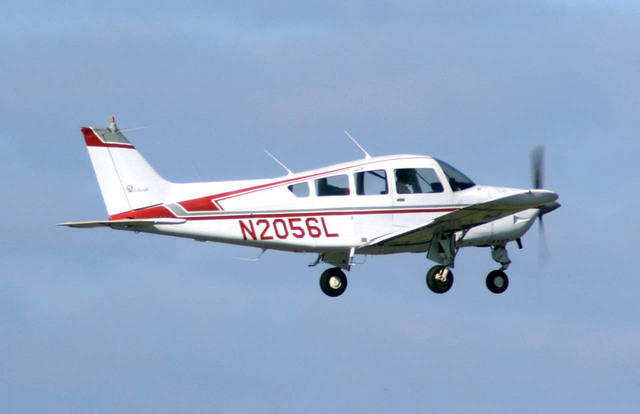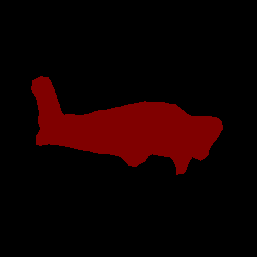圖片區隔工具會預測圖片的每個像素 特定類別與物件偵測相反的是 矩形區域和圖片分類模型則能將整體模型分類 圖片。請參閱圖片區隔總覽 示例 想進一步瞭解圖片區隔工具
使用工作程式庫 ImageSegmenter API 部署自訂圖片區隔器
或是在行動應用程式中預先訓練
ImageSegmenter API 的主要功能
輸入圖片處理作業,包括旋轉、調整大小和色域 轉換率
標籤對應語言代碼。
兩種輸出類型:類別遮罩和可信度遮罩。
供顯示用途的彩色標籤。
支援的圖片分段模型
下列型號保證與 ImageSegmenter 相容
也能使用 Google Cloud CLI 或
Compute Engine API
在 Java 中執行推論
請參閱圖片區隔參考資料
應用程式
查看範例,瞭解如何在 Android 應用程式中使用 ImageSegmenter。
步驟 1:匯入 Gradle 依附元件和其他設定
將 .tflite 模型檔案複製到 Android 模組的資產目錄
以便訓練模型指定不要壓縮檔案,且
將 TensorFlow Lite 程式庫新增至模組的 build.gradle 檔案:
android {
// Other settings
// Specify tflite file should not be compressed for the app apk
aaptOptions {
noCompress "tflite"
}
}
dependencies {
// Other dependencies
// Import the Task Vision Library dependency
implementation 'org.tensorflow:tensorflow-lite-task-vision'
// Import the GPU delegate plugin Library for GPU inference
implementation 'org.tensorflow:tensorflow-lite-gpu-delegate-plugin'
}
步驟 2:使用模型
// Initialization
ImageSegmenterOptions options =
ImageSegmenterOptions.builder()
.setBaseOptions(BaseOptions.builder().useGpu().build())
.setOutputType(OutputType.CONFIDENCE_MASK)
.build();
ImageSegmenter imageSegmenter =
ImageSegmenter.createFromFileAndOptions(context, modelFile, options);
// Run inference
List<Segmentation> results = imageSegmenter.segment(image);
請參閱原始碼並
Javadoc
取得更多設定 ImageSegmenter 的選項。
在 iOS 中執行推論
步驟 1:安裝依附元件
工作程式庫支援使用 CocoaPods 進行安裝。確認 CocoaPods 會在您的系統上安裝。請參閱 CocoaPods 安裝 指南 一文。
請參閱 CocoaPods 指南。 將 Pod 新增至 Xcode 專案
在 Podfile 中新增 TensorFlowLiteTaskVision Pod。
target 'MyAppWithTaskAPI' do
use_frameworks!
pod 'TensorFlowLiteTaskVision'
end
確認您要用於推論的 .tflite 模型出現在
您的應用程式套件。
步驟 2:使用模型
Swift
// Imports
import TensorFlowLiteTaskVision
// Initialization
guard let modelPath = Bundle.main.path(forResource: "deeplabv3",
ofType: "tflite") else { return }
let options = ImageSegmenterOptions(modelPath: modelPath)
// Configure any additional options:
// options.outputType = OutputType.confidenceMasks
let segmenter = try ImageSegmenter.segmenter(options: options)
// Convert the input image to MLImage.
// There are other sources for MLImage. For more details, please see:
// https://developers.google.com/ml-kit/reference/ios/mlimage/api/reference/Classes/GMLImage
guard let image = UIImage (named: "plane.jpg"), let mlImage = MLImage(image: image) else { return }
// Run inference
let segmentationResult = try segmenter.segment(mlImage: mlImage)
Objective-C
// Imports
#import <TensorFlowLiteTaskVision/TensorFlowLiteTaskVision.h>
// Initialization
NSString *modelPath = [[NSBundle mainBundle] pathForResource:@"deeplabv3" ofType:@"tflite"];
TFLImageSegmenterOptions *options =
[[TFLImageSegmenterOptions alloc] initWithModelPath:modelPath];
// Configure any additional options:
// options.outputType = TFLOutputTypeConfidenceMasks;
TFLImageSegmenter *segmenter = [TFLImageSegmenter imageSegmenterWithOptions:options
error:nil];
// Convert the input image to MLImage.
UIImage *image = [UIImage imageNamed:@"plane.jpg"];
// There are other sources for GMLImage. For more details, please see:
// https://developers.google.com/ml-kit/reference/ios/mlimage/api/reference/Classes/GMLImage
GMLImage *gmlImage = [[GMLImage alloc] initWithImage:image];
// Run inference
TFLSegmentationResult *segmentationResult =
[segmenter segmentWithGMLImage:gmlImage error:nil];
請參閱原始碼
程式碼
取得更多設定 TFLImageSegmenter 的選項。
在 Python 中執行推論
步驟 1:安裝 pip 套件
pip install tflite-support
步驟 2:使用模型
# Imports
from tflite_support.task import vision
from tflite_support.task import core
from tflite_support.task import processor
# Initialization
base_options = core.BaseOptions(file_name=model_path)
segmentation_options = processor.SegmentationOptions(
output_type=processor.SegmentationOptions.output_type.CATEGORY_MASK)
options = vision.ImageSegmenterOptions(base_options=base_options, segmentation_options=segmentation_options)
segmenter = vision.ImageSegmenter.create_from_options(options)
# Alternatively, you can create an image segmenter in the following manner:
# segmenter = vision.ImageSegmenter.create_from_file(model_path)
# Run inference
image_file = vision.TensorImage.create_from_file(image_path)
segmentation_result = segmenter.segment(image_file)
請參閱原始碼
程式碼
取得更多設定 ImageSegmenter 的選項。
在 C++ 中執行推論
// Initialization
ImageSegmenterOptions options;
options.mutable_base_options()->mutable_model_file()->set_file_name(model_path);
std::unique_ptr<ImageSegmenter> image_segmenter = ImageSegmenter::CreateFromOptions(options).value();
// Create input frame_buffer from your inputs, `image_data` and `image_dimension`.
// See more information here: tensorflow_lite_support/cc/task/vision/utils/frame_buffer_common_utils.h
std::unique_ptr<FrameBuffer> frame_buffer = CreateFromRgbRawBuffer(
image_data, image_dimension);
// Run inference
const SegmentationResult result = image_segmenter->Segment(*frame_buffer).value();
請參閱原始碼
程式碼
取得更多設定 ImageSegmenter 的選項。
搜尋結果範例
這個例子是區隔管道的區隔結果 deeplab_v3 TensorFlow Hub 上可用的一般區隔模型

Color Legend:
(r: 000, g: 000, b: 000):
index : 0
class name : background
(r: 128, g: 000, b: 000):
index : 1
class name : aeroplane
# (omitting multiple lines for conciseness) ...
(r: 128, g: 192, b: 000):
index : 19
class name : train
(r: 000, g: 064, b: 128):
index : 20
class name : tv
Tip: use a color picker on the output PNG file to inspect the output mask with
this legend.
區隔類別遮罩看起來應像這樣:

試用簡單的 CLI 示範工具, ImageSegmenter 使用自己的模型與測試資料
模型相容性需求
ImageSegmenter API 預期的 TFLite 模型須搭配必要的 TFLite 模型
中繼資料。查看建立映像檔中繼資料的範例
使用 TensorFlow Lite 中繼資料寫入器
API。
輸入圖片張量 (kTfLiteUInt8/kTfLiteFloat32)
- 輸入大小為
[batch x height x width x channels]的圖片。 - 不支援批次推論 (
batch須為 1)。 - 僅支援 RGB 輸入 (
channels必須為 3)。 - 如果型別是 kTfLiteFloat32,就必須使用正規化選項 附加於中繼資料,以便進行輸入正規化
- 輸入大小為
輸出遮罩張量:(kTfLiteUInt8/kTfLiteFloat32)
- 大小為
[batch x mask_height x mask_width x num_classes]的張量,其中batch必須是 1,mask_width和mask_height是 模型產生的區隔遮罩維度,以及num_classes是模型支援的類別數量。 - (但建議使用) 標籤對應,可以將
與 TENSOR_AXIS_LABELS 類型的 AssociatedFile-s 和 TENSOR_AXIS_LABELS 類型,各包含一個標籤
互動第一個這類 AssociatedFile (如有) 會填入
label欄位 (在 C++ 中稱為class_name)。display_name欄位將填入關聯檔案 (如有),且語言代碼符合 使用的ImageSegmenterOptions的display_names_locale欄位 建立時間 (預設為「en」,例如英文)。如果這些都不是 可用,只有結果的index欄位會填入內容。
- 大小為

